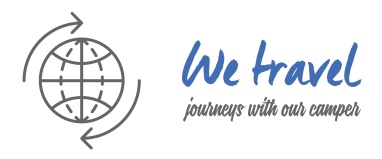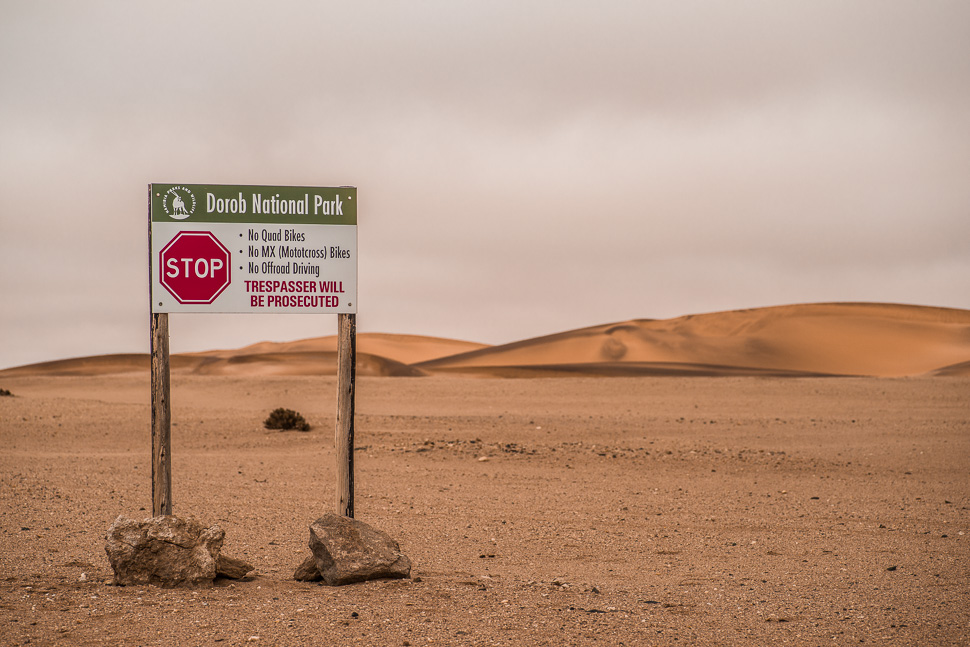
In Swakopmund we went first on a “Living “Desert” tour, where they show you all the creatures, who live in the sand dunes. The area around Swakopmund is the Dorob National Park, to protect this fragile ecosystem where every car beside the path would destroy some little plant or animal living in the sand. We had booked all the tours in the area through our campsite, the “Alte Brücke”, who were very helpful and organised everything for us.
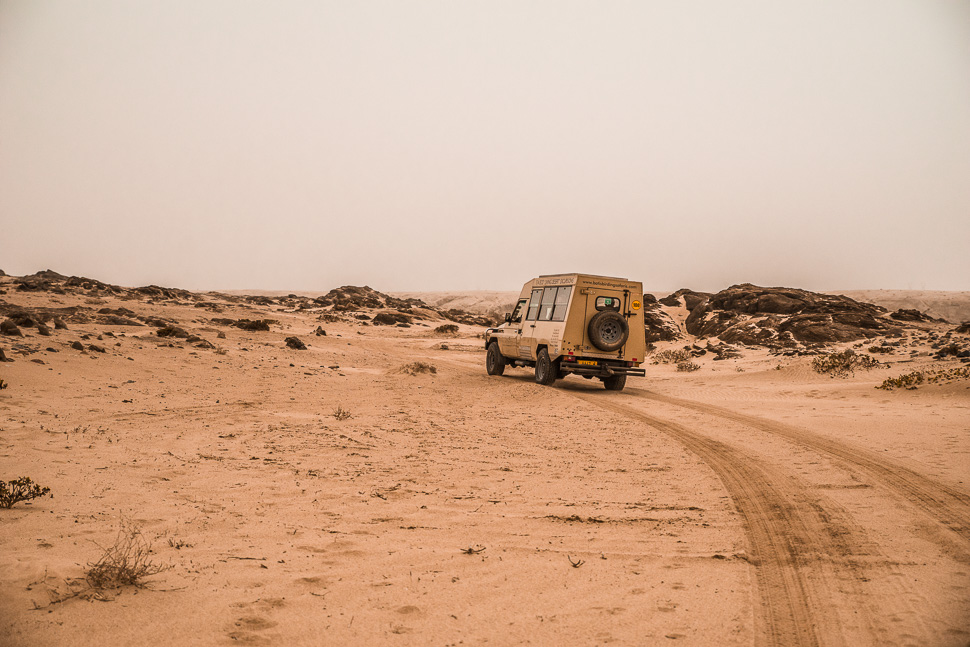
The mornings are often very foggy along the coast, this day it was very cold too, which didn’t make it easy to find something to show us. While the guides were trying different spots and sprinting from bush to bush to find something, we admired the desert landscape and walked up some sand dunes.
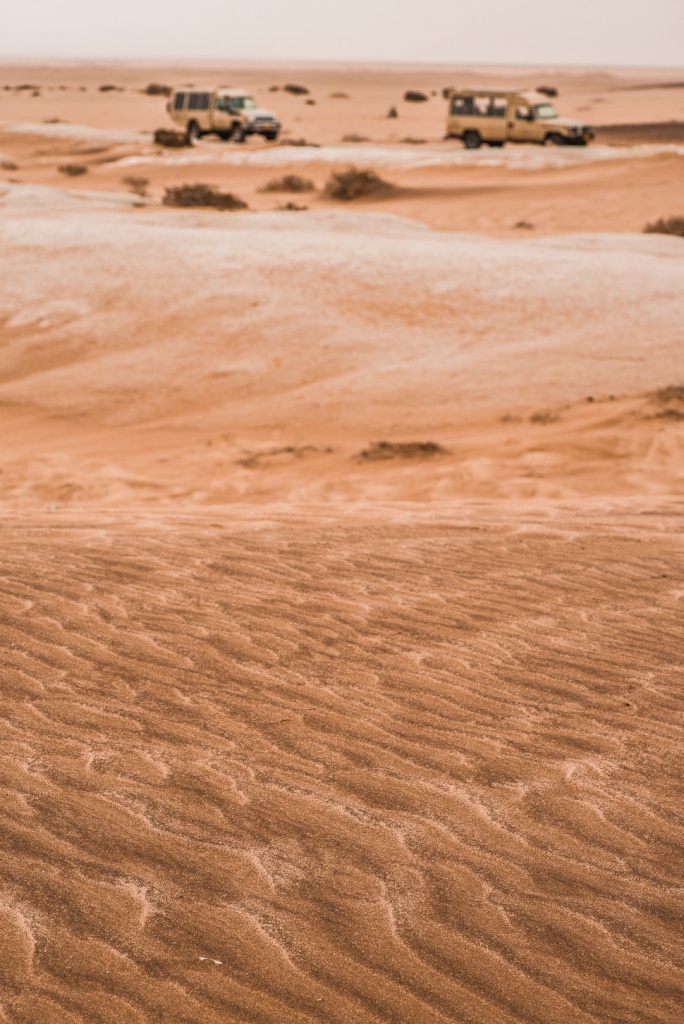
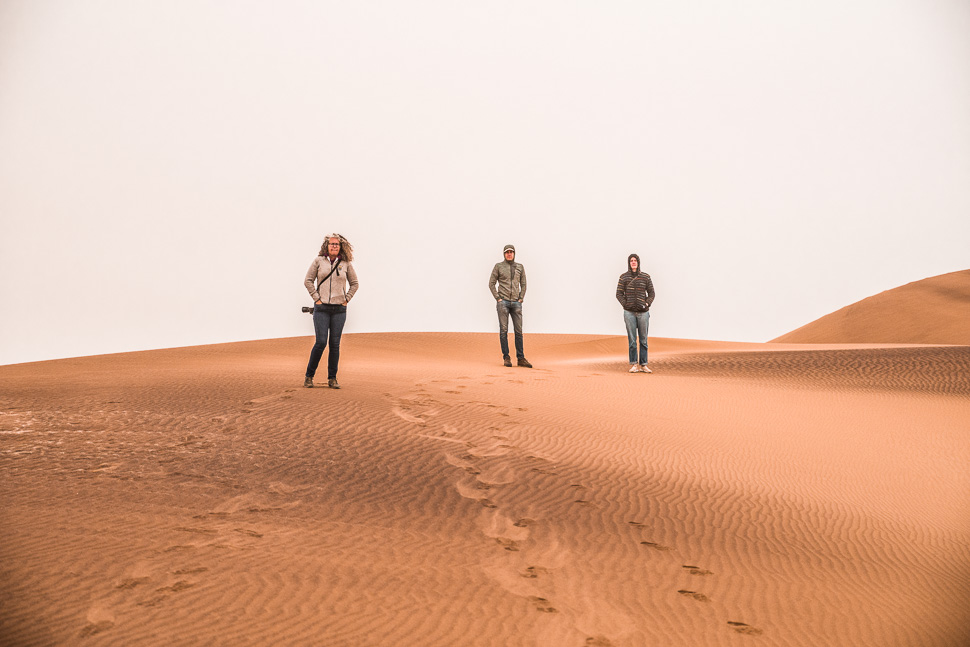
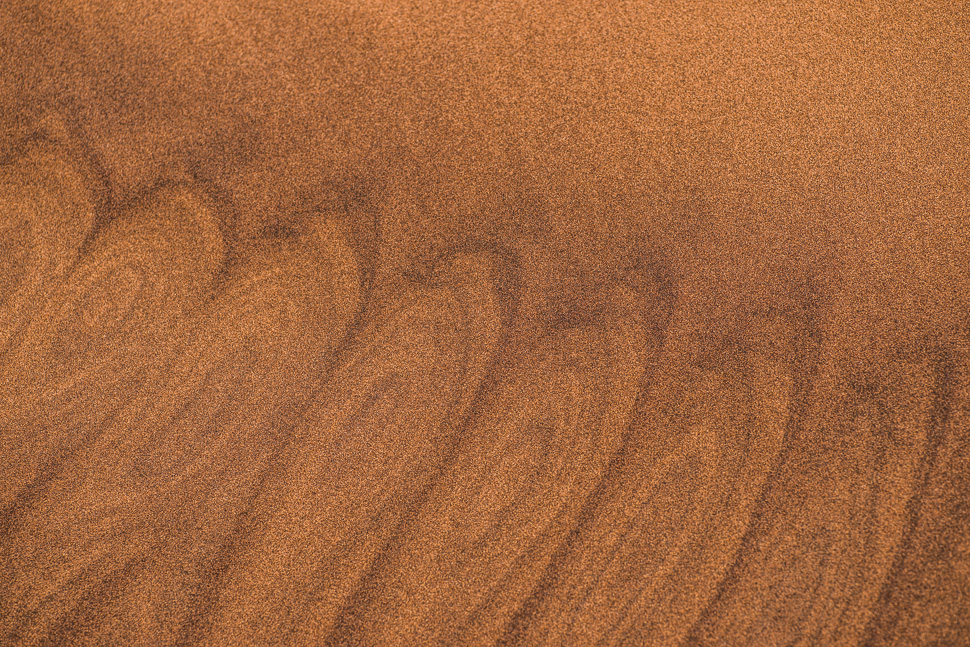
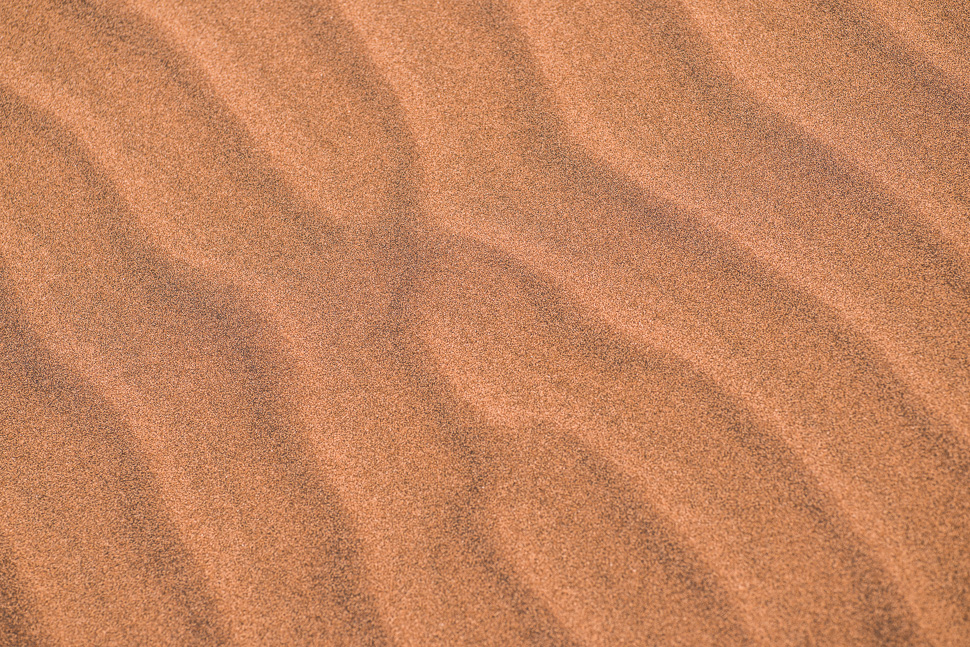
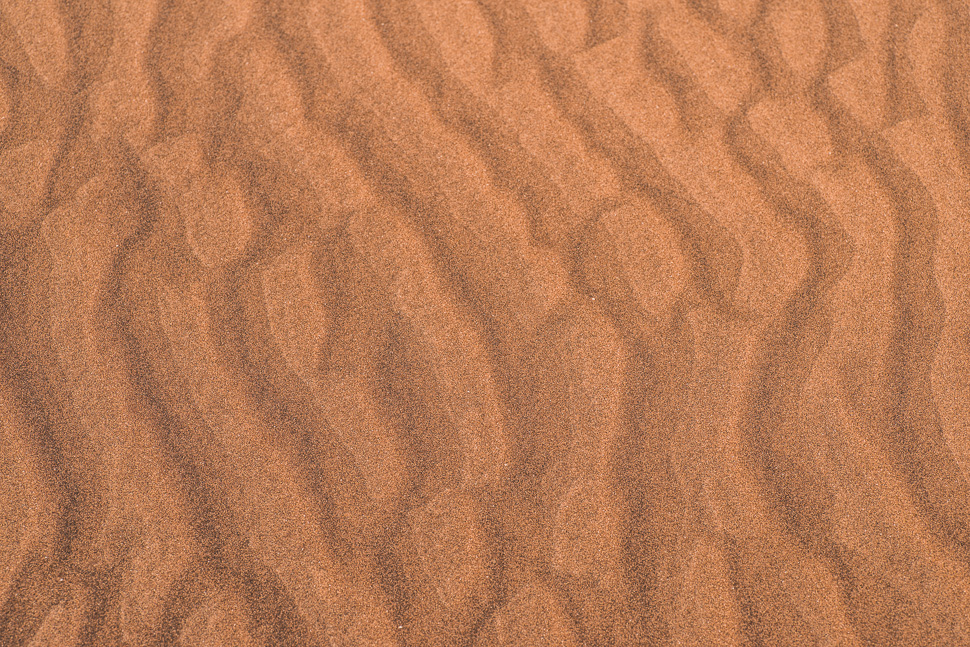
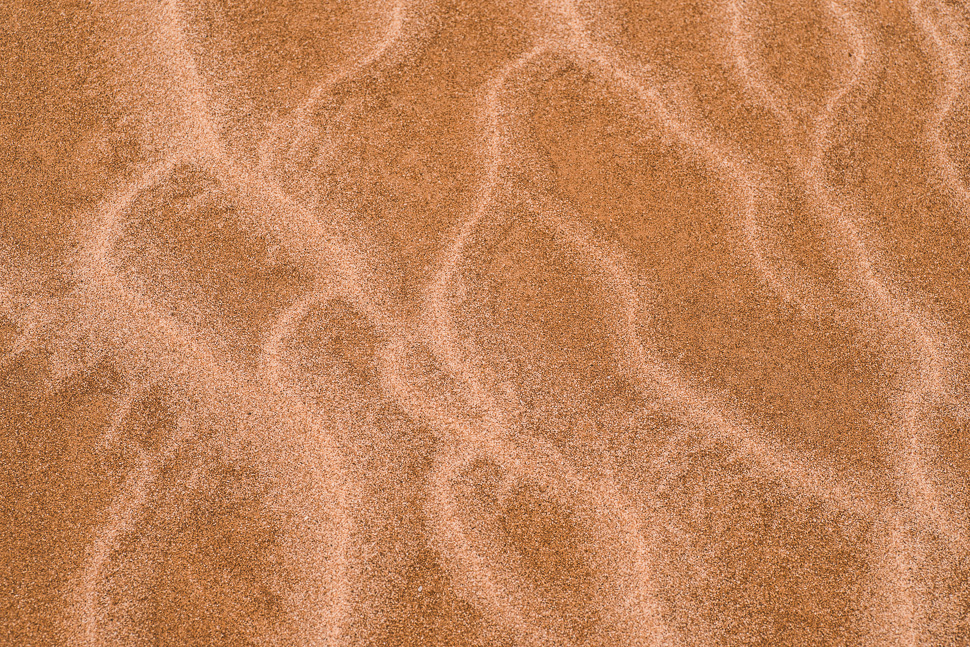
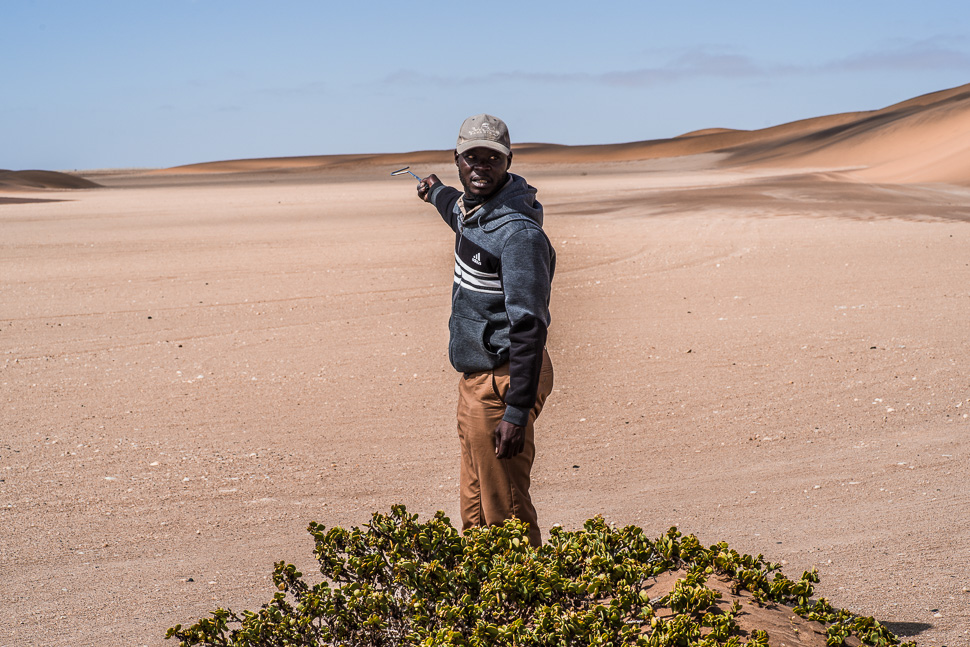
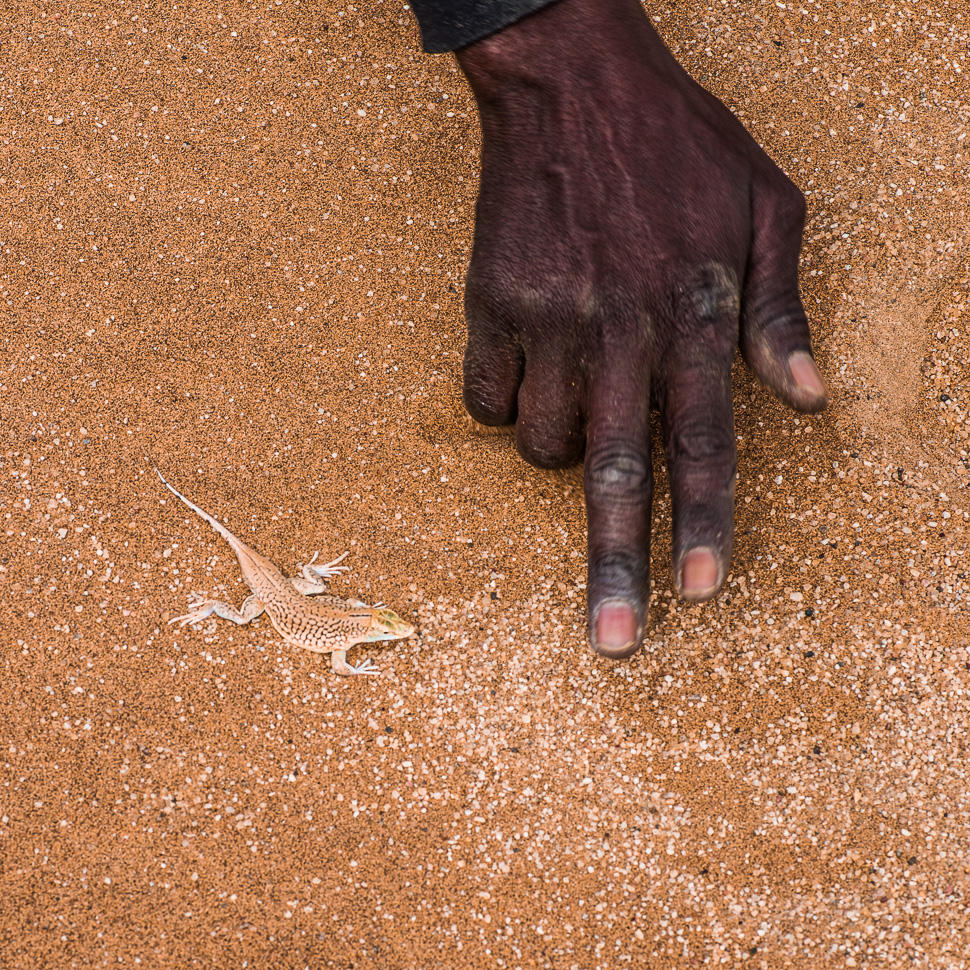
Our first find was a shovel-snouted lizard, also called the Namib sand-diver, as it disappears quickly into the sand.
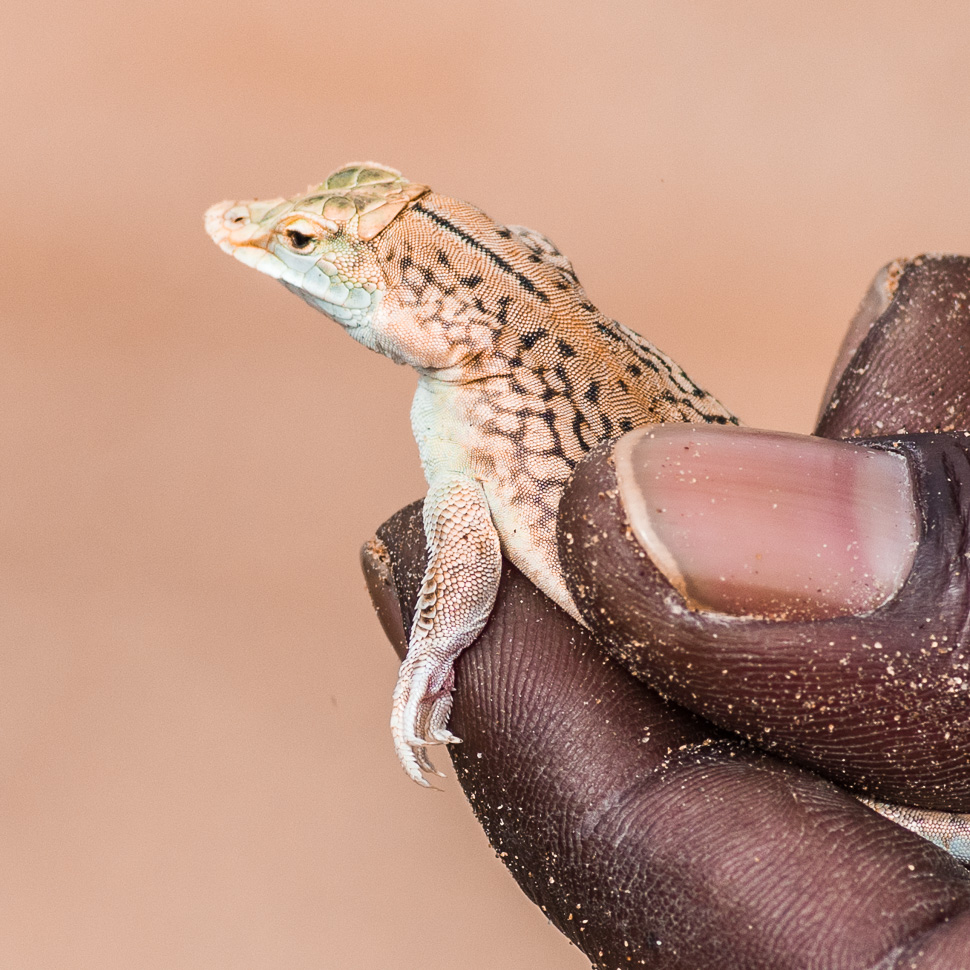
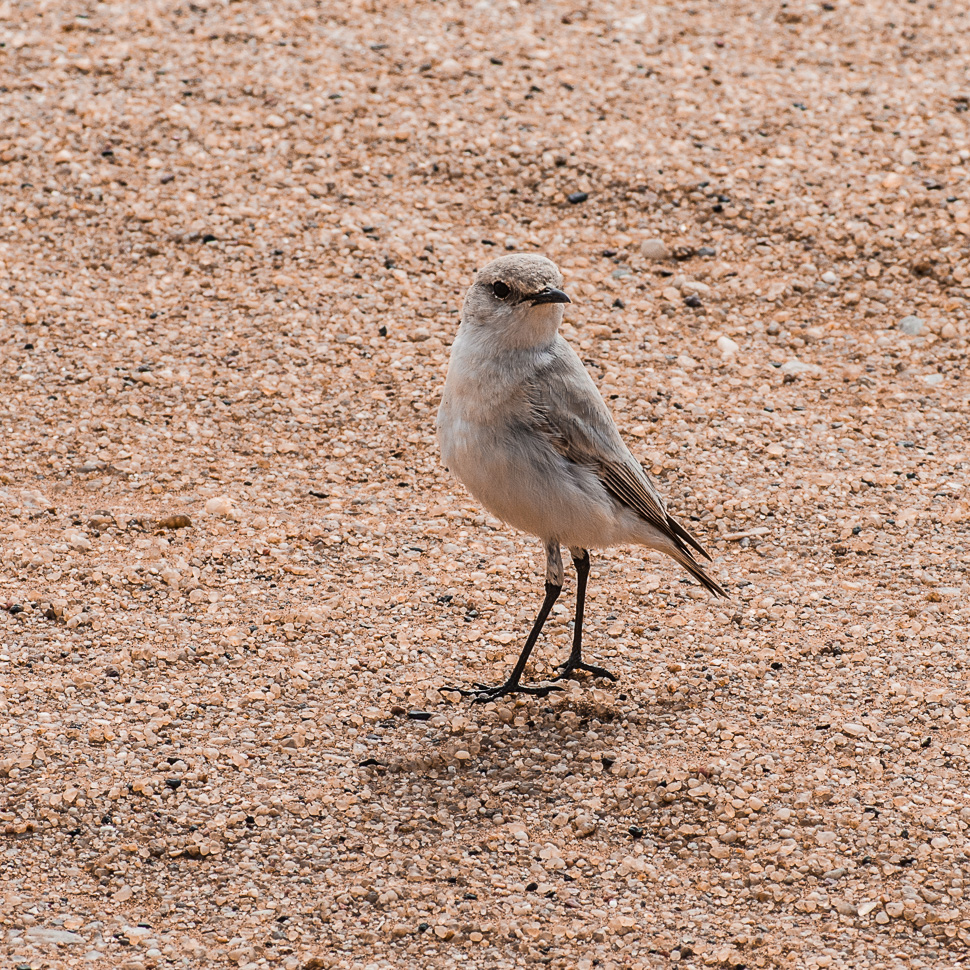
This little bird knew, that the guide will feed some insects to a chameleon, if we would find one, and followed us around. Very clever bird.
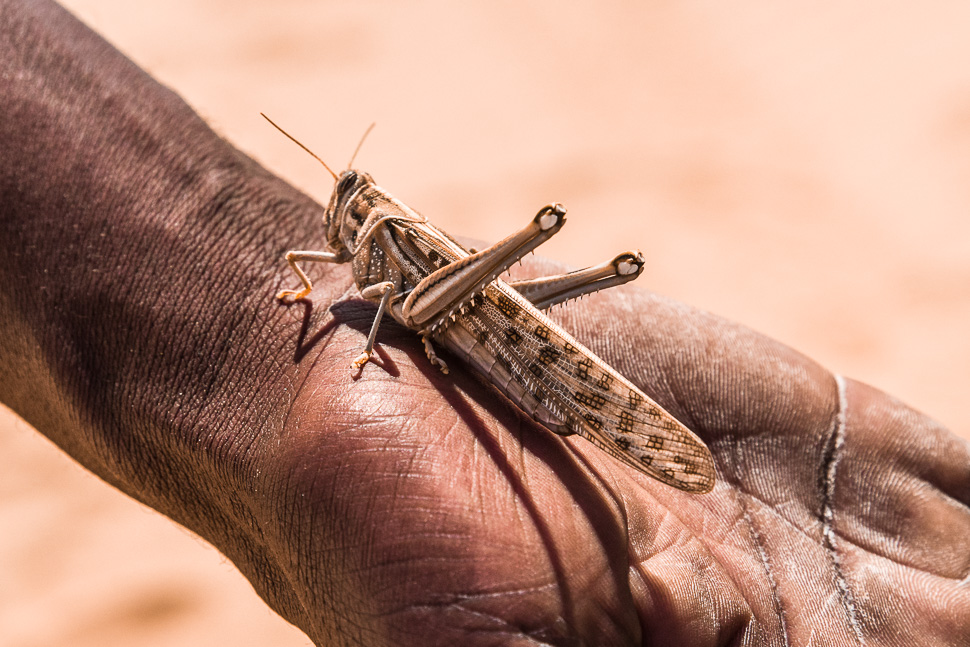
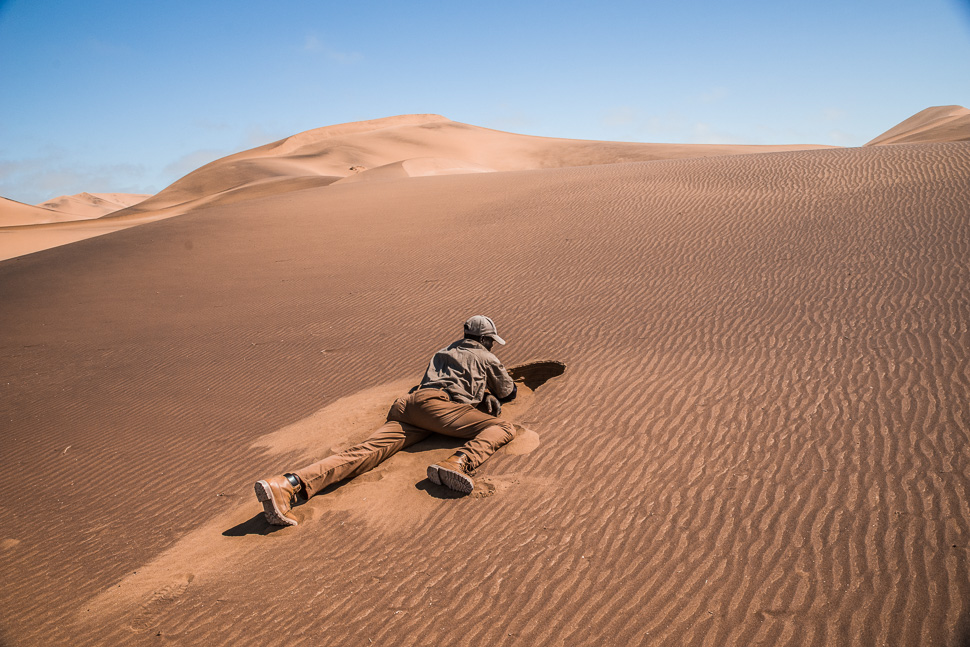
Rudolf, our guide, noticed the trace of a gecko and started to dig. He had to go deep before he carefully extracted a Namib sand gecko or web-footed gecko, which is famous for his dance like behaviour, when it lifts his leg, to cool it a little on the hot sand. It is nearly transluscent and its fully webbed toes, enable this gecko to burrow easily and to run on loose sand.
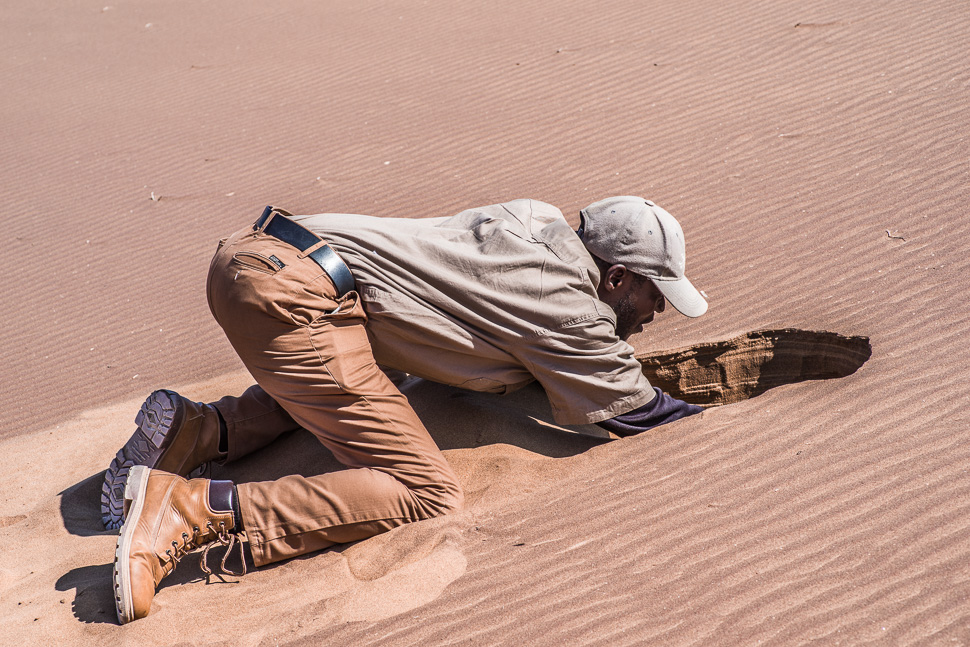
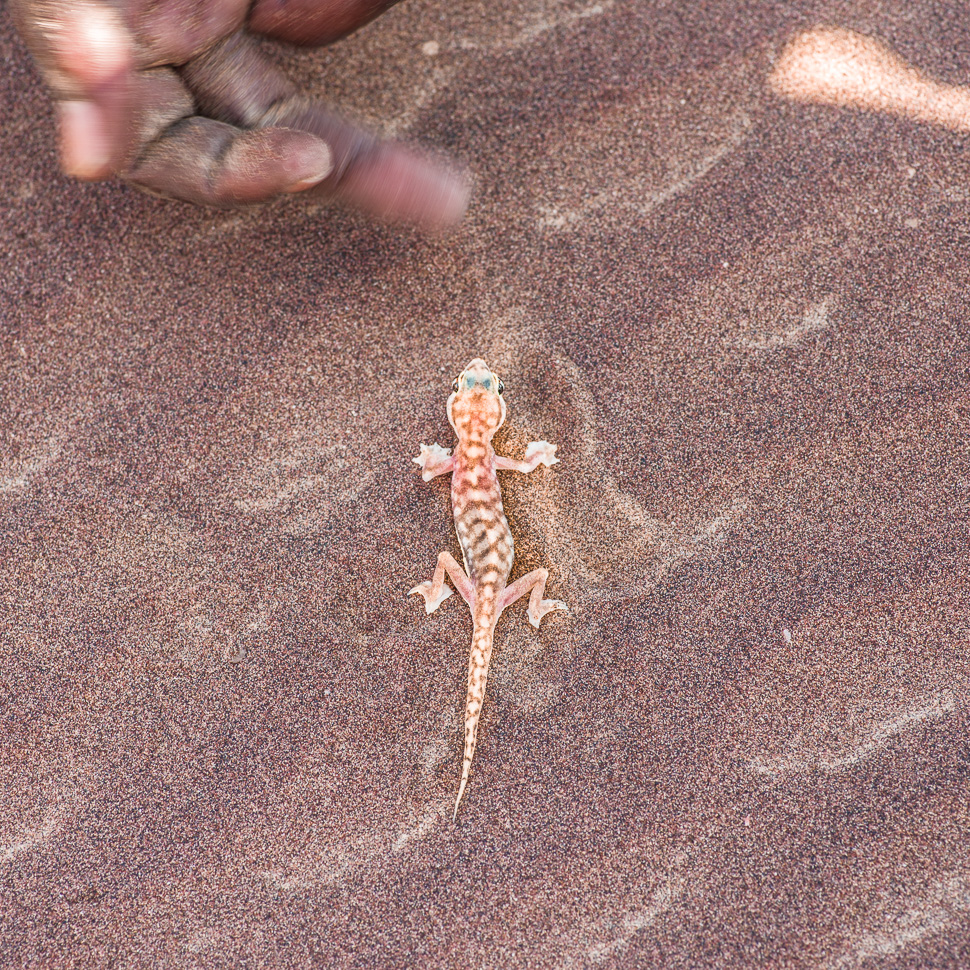
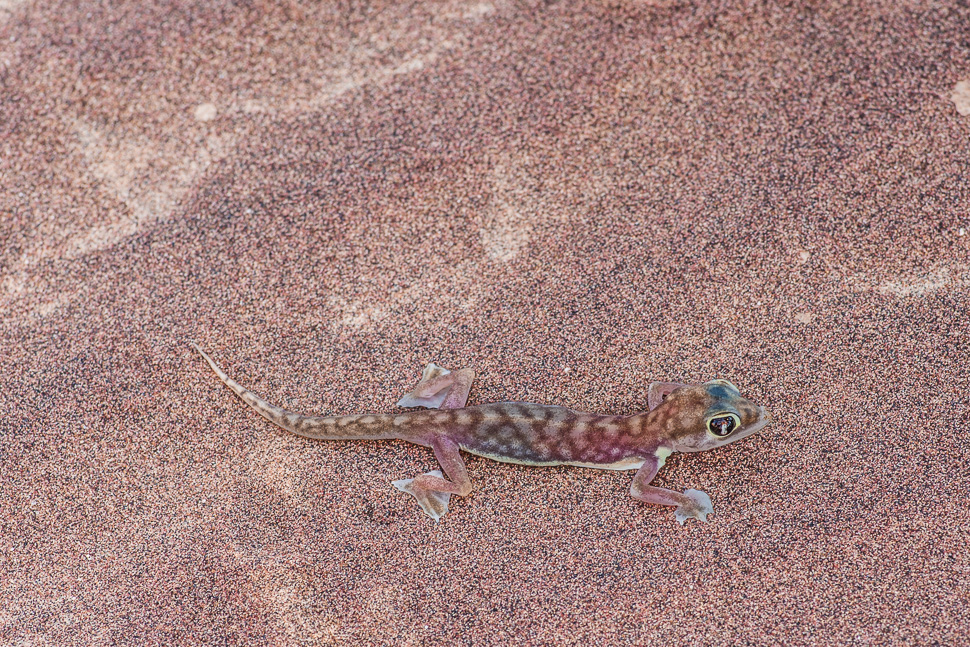
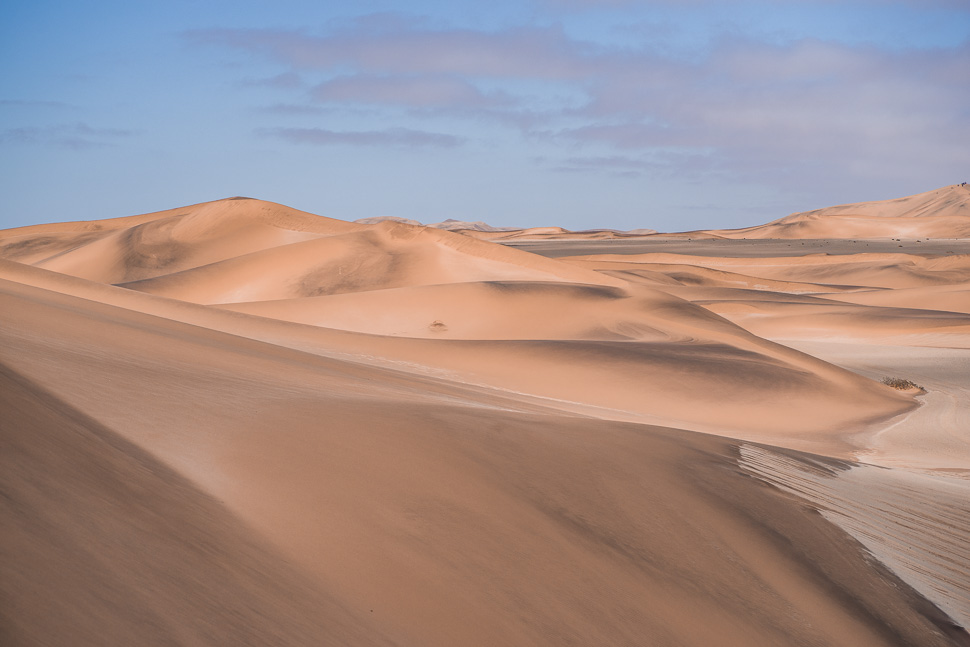
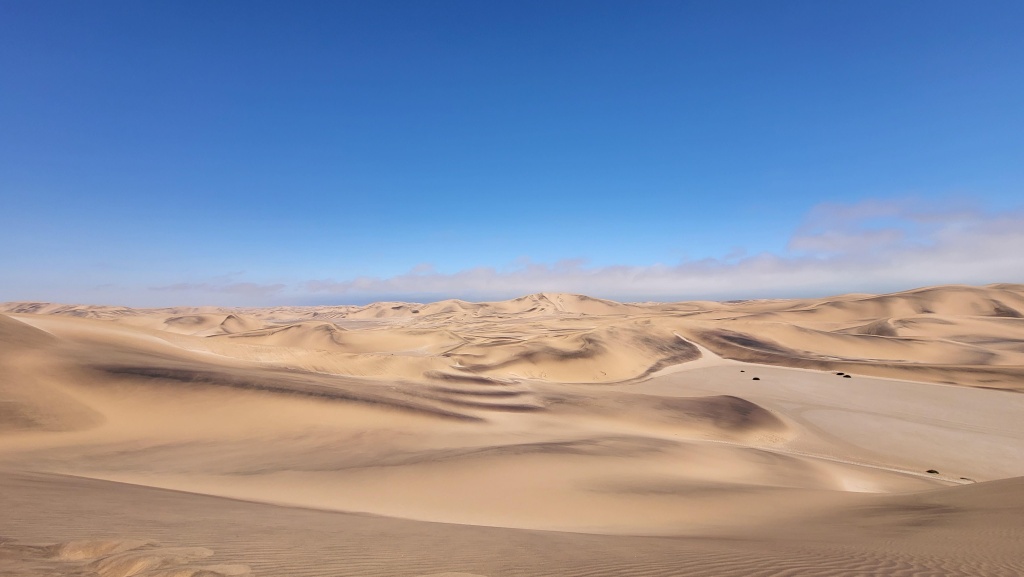
The black particles on the sand dune is made of iron oxide, which is magnetic. With a strong magnet Rudolf gathered these particles and let them move, standing like spikes.
We had enjoyed the tour with Rudolf and learned a lot, as we could ask many questions about the desert, the coast, the country and the people. At the end, they drove us through the township of Swakopmund and explained about the life there.
Tomorrow, we plan a boat trip from Walvis Bay, to see the birds and the sea dwellers – more on our next post.
